Howard Slatter
The 150 year history of post offices and postal services in Trumpington. This article is one of a series about traders, based on a presentation given at a Group meeting on 11 October 2012.
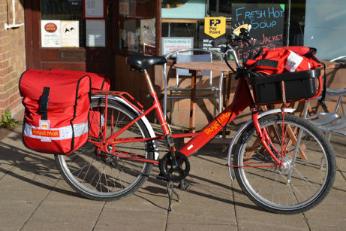
The Victorians modernised the post office service into more or less what we recognise today. Before Rowland Hill came on the scene, there was a national postal service, but postage was paid by the recipient, and was very expensive, so not used by the vast majority of people. Cambridge would have had a post office but as far as we know Trumpington did not.
Rowland Hill campaigned for years to reform the Post Office. In 1837 he wrote “Post Office Reform: its importance and practicability”, including the revolutionary idea that the person sending the letter should pay for it by buying a special cover from the post office which had been stamped beforehand:
“The only objection which occurs to me to the universal adoption of this plan is the following. Persons unaccustomed to write letters would perhaps be at a loss how to proceed. They might send or take their letters to the Post Office without having had recourse to the stamp. … Perhaps this difficulty might be obviated by using a bit of paper just large enough to bear the stamp and covered at the back with a glutinous wash which the bringer might by applying a little moisture attach to the back of the letter so as to avoid the necessity for redirecting it.”
That, of course, signalled the way for the Penny Black, the first and most famous stamp in postal history, introduced in 1840.
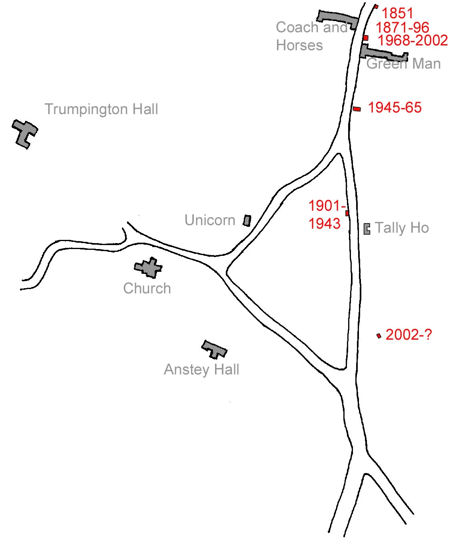
Now to Trumpington. In the entry for the village in Gardner’s 1851 Directory for Cambridgeshire there is a reference to ‘Wallis, John, Letter Receiver’. The 1847 entry in Kelly’s directory has a bit more detail: ‘John Wallis, receiving house. Letters from Cambridge 8.15 am, box closes 5.30 in winter, 6.00 in summer.’ The 1851 census entry for John Wallis shows him describing himself as a ‘Malster’ [maltster], and makes no mention of his job as ‘letter receiver’, which was clearly only part-time. It is difficult to work out exactly where people were living in 1851, but the evidence points to his living in the north of the High Street, north of the Green Man and the Coach and Horses, probably in one of the old thatched cottages that used to be there. His job as maltster was presumably at one of those inns.
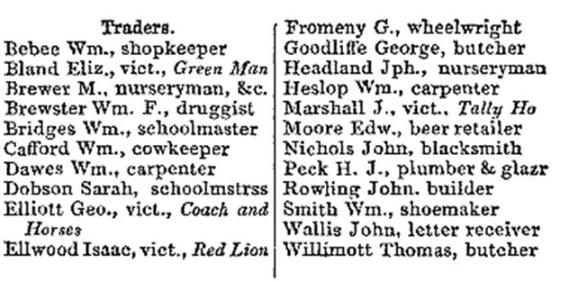
By the time of the 1861 census the letter receiver was William Bebee. He was John Wallis’s son in law, having married Rosamund Wallis in 1843, and his main job was as a baker.
The Bebee family lived just north of the Green Man, on the site of these two houses, which will feature later. William Bebee died in 1872, and his son William Wallis Bebee took over the Post Office business until he also died in 1878 and his mother Mrs Rosamund Bebee (John Wallis’s daughter) became postmistress.
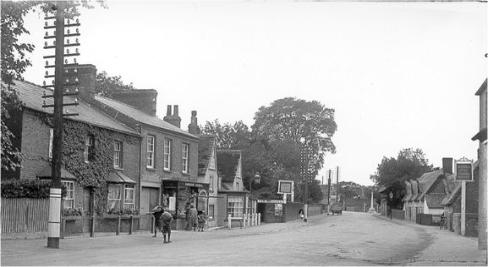
By 1883 the Post Office business had moved next door to Mrs Elizabeth Hulland, and she was the letter receiver until almost the end of the 19th century. From at least 1900 until the second World War the Post Office was on the opposite side of the High Street, almost opposite the Tally Ho.
Two photographs of the High Street highlight the atmosphere of the village at that time. Looking north, the Post Office is just visible in the distance on the left. Looking south, it is the first building on the right after the Smithy. The Sub-Postmaster was Mr Henry James Saunders, a Trumpington man through and through, who had a baker’s shop in the same premises and in the 1901 census described himself as a ‘Baker and Postmaster’. His predecessors had all been entitled ‘letter receivers’, but Mr Saunders was the first to be appointed Sub-Postmaster.
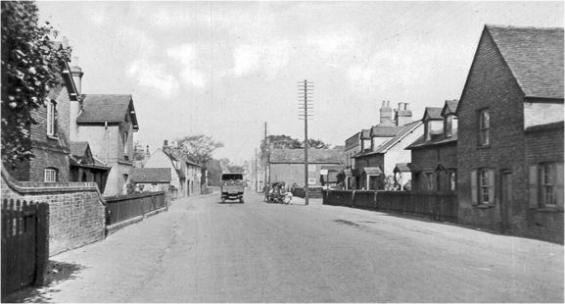
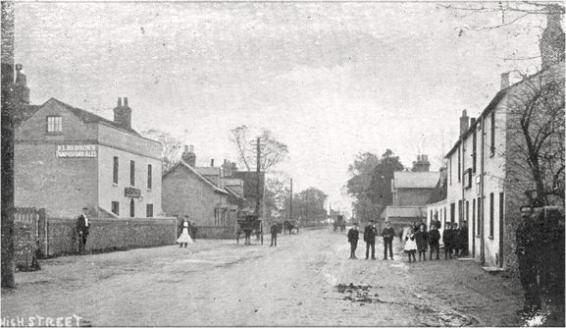
Mr Saunders would no doubt have been an avid reader of The Sub-Postmaster. In volume 1, no. 1, September 1899, it has “The Sub-Postmaster bears the burden, struggling among mail bags and parcels, while on his shoulders rests the heavy responsibility of the Post Office, which he still keeps upright and true”.
By the 1900s, the Trumpington Post Office was more than just a receiver and despatcher of letters, and the 1904 edition of Kellys Directory lists an impressive variety of initials attached to the business: MO (Money Orders), TO (Telegraph Office), TMO (Telegraphed Money Orders?), ED (Express Delivery), PP (Parcel Post), SB & A & I (Savings Bank & Annuity and Insurance Office). Letters came from Cambridge twice a day, at 5.30 and 11.30 am, and were despatched 3 times, at 10.5 am and 3.10 and 8.30 pm.
Mr Saunders died in 1943 and the Post Office moved back across the road to Lyme Cottage [Lime Cottage], next door to the Red Lion. Charles Arthur Willson, who came from Chesterton, ran the Post Office from here between 1945 and 1967. Lyme Cottage was next to the Red Lion, opposite the War Memorial. The Red Lion was rebuilt and extended in 1936, before the Willsons moved into Lyme Cottage.
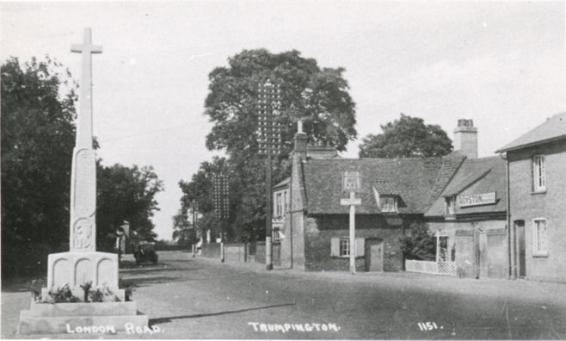
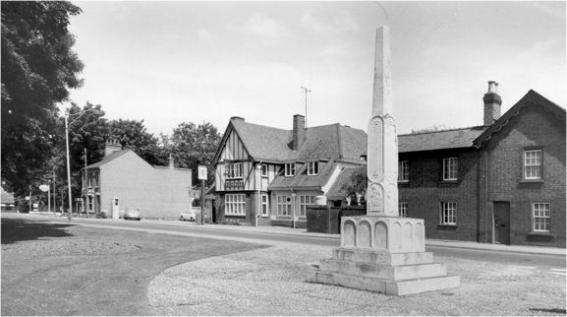
In 1967 the Post Office moved again, this time back to a familiar location to the left of the Green Man. No. 53 High Street stands where the Bebees had the Post Office up to 1900. It had then been Mr and Mrs Harvey’s stores and draper’s shop, and in 1965 it became Sybil’s wool and haberdashery shop, run by Mrs Sybil Clark. In 1967 she took over the Post Office business from Mr Willson. Then, in 1968 the shop and business were bought by Mr Kenneth Trinder of Soham, who also owned Soham, Littleport and Kings Hedges Road Post Offices. His son John Trinder oversaw the running of the Trumpington post office, and Dawn Jarrold and her husband Brian came to manage it and live above the shop. Dawn had previously been employed by the Trinders at Soham, and she and John Trinder trained Brian up in the business.
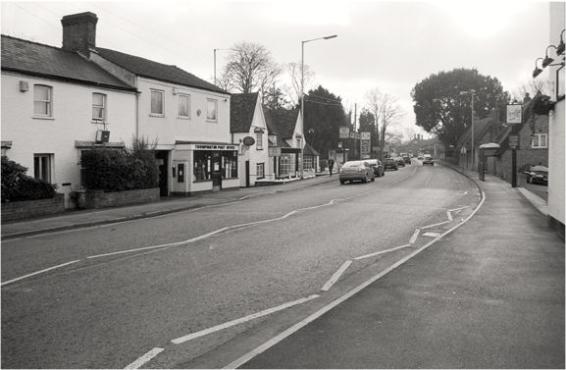
The photo shows the Post Office when it was under the management of the Jarrolds. In 1970 Julie Pouter started working there, and I’m very grateful to Julie for providing me with the detail of this period in the life of the Post Office. In 1993 Brian Jarrold died, and Dawn moved back to Soham. Julie took over the full time management in 1994, until in 2002, unknown to her, John Trinder sold the Post Office and “her along with it” to Abid and Tasneen Abdulali. Julie recalls with nostalgia the happy times when an old Post Office not only sent telegrams, sold stamps, National Savings and Postal orders, gave out pensions, sometimes gun licences, Gamekeeper and Dog licences, sympathy and advice, but also sold maggots by the pint from the shed in the garden, along with fishing tackle, bikes, bike repairs, fireworks in November, sweets, cigarettes, stationery, cottons, needles and all the rest.
The letterbox to the left of the shop is a reminder of the previous existence of a Post Office. As it has a George VI monogram on it, I think it must have come from Lyme Cottage when the post office moved from there. Granite Transformations has been based in the store since 2004.
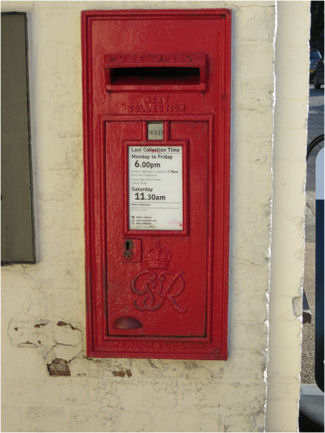
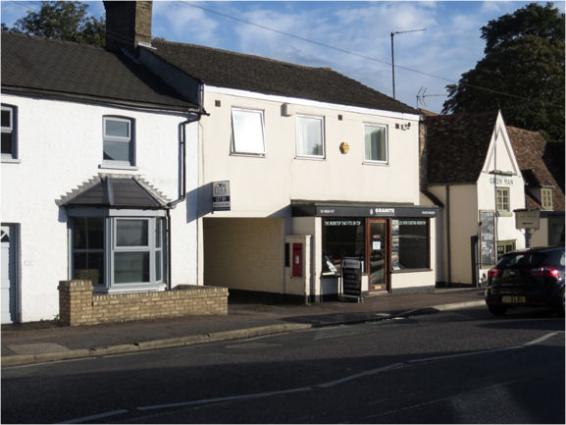
In 2002, the Abdulalis opened the new Post Office in the rear of the Bun Shop in Anstey Way. We still have a local Post Office and, with the increasing population over the next ten years, will hopefully continue to do so.
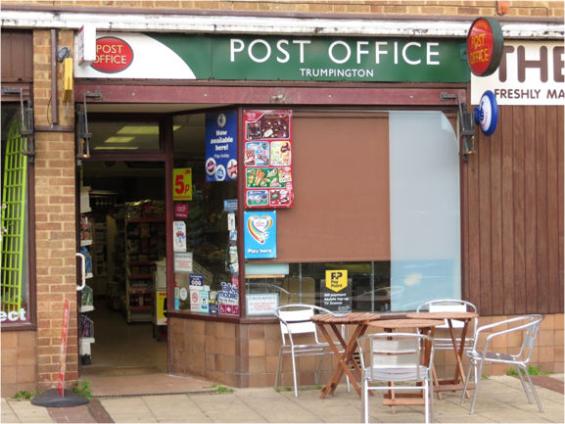
A Post Office is no use, of course, without postmen and women to deliver the stuff. Trumpington had a postman from at least 1851 onwards: Thomas Cambridge lived in Church Lane, and seems to have handed on his job as Post Office Messenger to his son Thomas in about 1885. For a time we also had Mrs Hulland’s son Walter Hulland. And Alfred Whittamore of Alpha Terrace was a postman at least from 1912 to 1920.